https://www.youtube.com/watch?v=_OuFPfuhm1U
How to Solve a 3x3x3 Rubik's Cube - Easiest Tutorial (Last Layer)
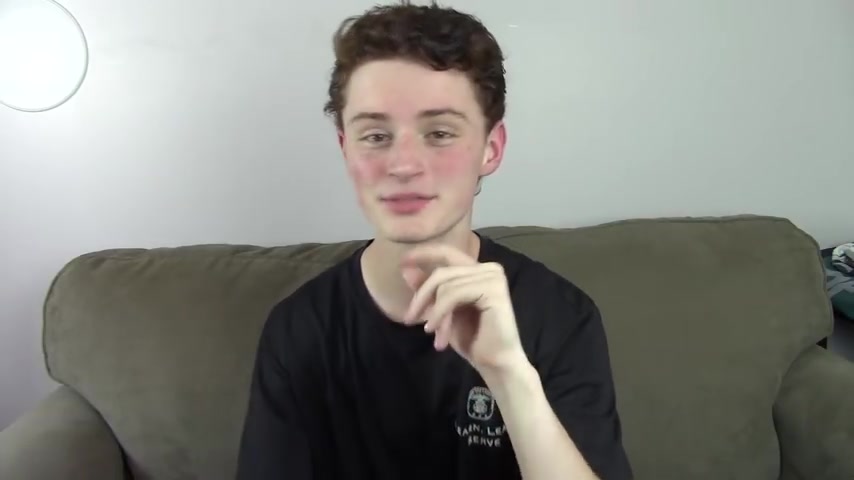
Hey guys , welcome back to my channel today .
I'm super excited to present to you guys .
I'm doing another how to solve the three by three last layer tutorial for beginners .
I made one over a year by over a year ago and I think it was February something 2007 the 18 .
So it's been more than a year and obviously , we've progressed things better setups , better lighting , all that great stuff .
So I'm super thankful for all that and um I just wanted to try to give back so like , hopefully I can make a higher quality , more in depth slower tutorial that you guys were wanting because I was reading the comments like almost 1000 comments .
It was like 800 something comments which is mindless .
You guys really , really wanted me to lower obviously and explain certain things better .
And I've been reading through all trying to put together a video that makes sense .
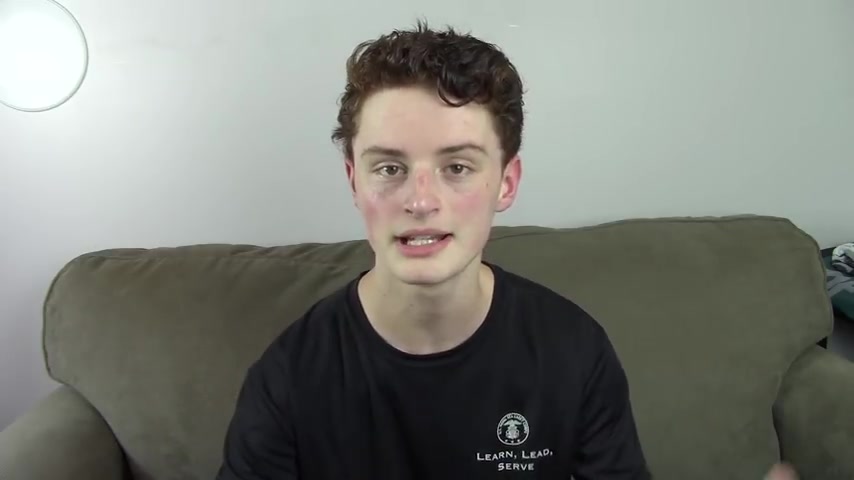
It's not identical to the one I've made before , but it main key things that you guys are really wanting me to do my three by three .
I've sat down , I've done my homework and I've been working really , really hard to try to put this video together and make it as high quality as possible .
Game is the last one I might be doing a giveaway on my Instagram .
So go follow it remix underscore life also .
And my , with further ado , we're gonna go ahead and hey guys , what is the rubiks I here .
Welcome back to the video today .
I'm going to be showing you how to solve the final layer of your three by three Rubik's cube .
So first things first , let me uh unscramble uh this cube and then solve up the the first two layers .
So you're gonna wanna have these first two layers of your Rubik's cube solved .
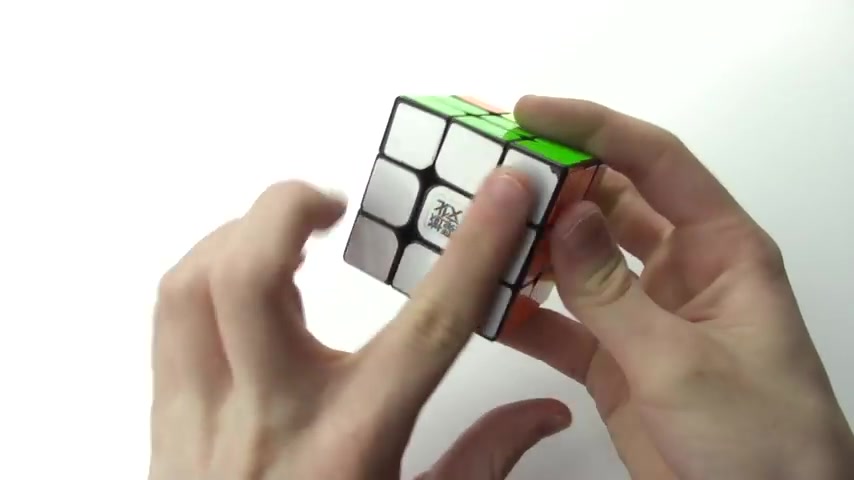
And then uh I'm teaching you how to solve this last bit around here and then the top yellow face and OK , there we go .
So I've solved the first two layers of my Rubik cube .
So I have the whole white side done and I've both of these layers done of my Rubik's cube .
So now I only have to do the yellow side and then this last bit on the top , on this top side right here .
And um this is honestly a really uh straightforward step .
It's basically the same as the first one except it's just you can have some different cases here .
So the first step of solving the last layer of your three by three Rubik's cube is solving the yellow side .
So basically how you how we're going to go about doing this is solving the Yellow Cross basically the same way , how we solved the White Cross , how you solve the White Cross and the white corners .
And then we solve the middle layer .
We're basically going to do exactly that .
We're going to solve the Yellow Cross .
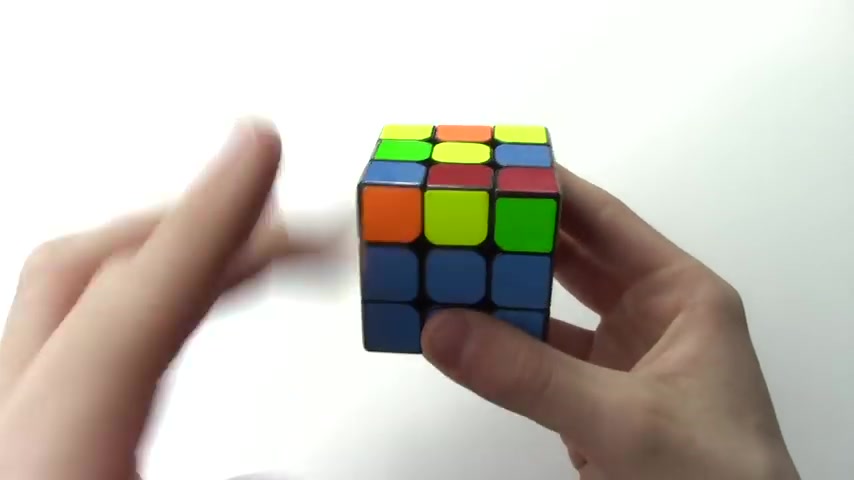
And then we're going to solve the yellow corners and that'll be the last bit of the yellow and then good to go on the last uh side layer here .
So what we're gonna do is basically solve this .
It can't be exactly the same obviously , because we don't have as much wiggle room to move pieces around because it doesn't .
And this matters more .
This is more important because this is close to the end .
So basically , what we're gonna do is we're gonna do this one algorithm here .
So now there's gonna be three different cases that you can have , you can have what I have , which is called the dot So we're only looking at these edge pieces here .
So these corner bits don't matter right now .
So we're only looking at this cross piece .
So there's no yellow pieces on this cross except for this one centerpiece which has to be here .
And in this case , we call this the dot which is the very bottom um step of the steps because you can , as you're solving , you can either have this , you can have something called the L or the hook , which is like uh two pieces adjacent to it .
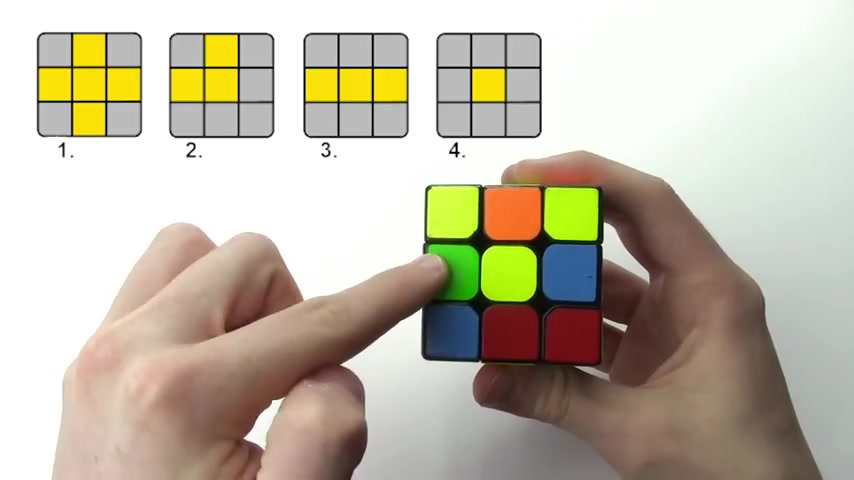
So like this or like this like that or like that makes an L shape .
And that's the second part and then the third part up is called the bar where it has a straight line of pieces like this .
It's like this or like that .
And that's good .
That's like super simple .
And then obviously , if you're super lucky , you can have all the yellow pieces on the cross right here , which would be uh perfect , which make yourself faster .
But uh in this case , we don't , we just have the dot And you're going to do the same algorithm for every single one of them .
Obviously , if you have the cross , just sit , sit tight , maybe watch this just so you can uh know what you're supposed to do .
But um if you have the dot Do , you can hold the cube however you want as long as the yellow is on top .
Um And I'm gonna show you what to do and then I'm gonna slowly progress through all of them .
So if you have the hook , I'll be , I'll be uh I'll be doing that step next and then the and then the bar and then the cross .
So if you have the dot Go ahead and do this algorithm .
OK .
So this algorithm is literally only six turns .
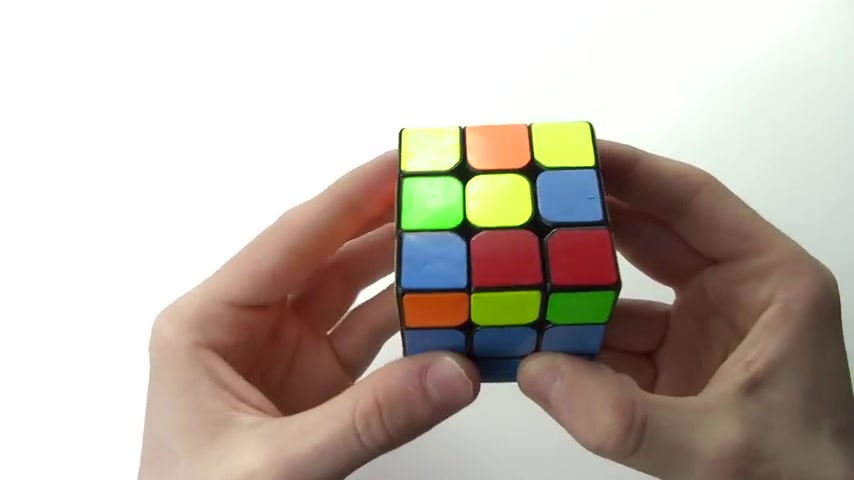
So it's super simple as long as you follow along with exactly how I turn .
So if you have the dot and there's no other yellow pieces on the top , you can hold the cube in any different area you want to , it doesn't matter .
Um And you're gonna do this algorithm .
So it's like this .
So F , which is the front face clockwise , R , which is the right side , clockwise U which is this top side clockwise R prime , which is the right side , counter clockwise uh U prime , which is the top side , counter clockwise and then F prime , which is the front face counterclockwise .
And there we go .
Now we have the L shape and it looks like a square .
This is because there's corners that we already have up there , which is good for later .
But it's kind of just confusing to look at .
So just ignore the corners again .
And you can see now we have two pieces that are shaped like an L .
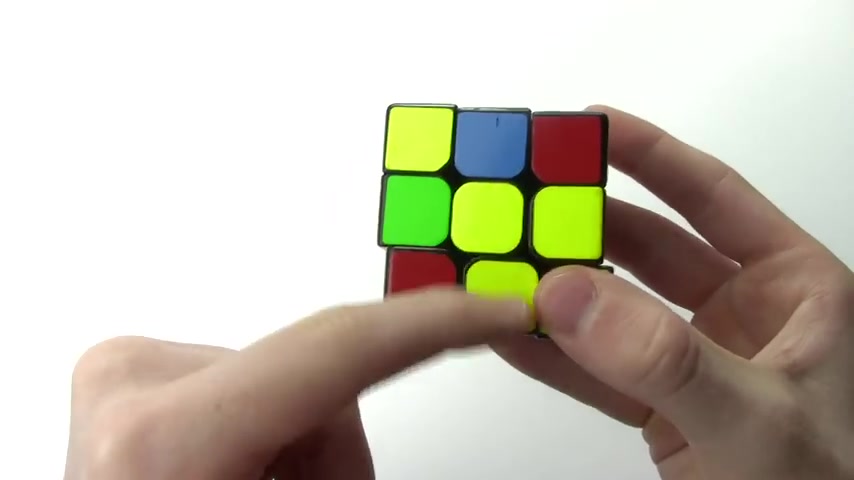
So we didn't have this yellow corner here .
It would look like an L .
So now if you're here , even if it's anywhere on the cube , like if it's up here in the top , right , top , left , bottom , left or bottom , right , it's OK .
What you're gonna wanna do if it's over anywhere else , you just want to take this top face and then just turn it .
So it's in the bottom , right ?
So your L shape is kind of like this .
It's not really an L anymore .
It's kind of like a , I don't know what that is .
It's just like a weird , like hook shape , I guess .
OK .
So you're gonna do this algorithm , you're gonna go F , which is the front side , clockwise , R , which is the right side , clockwise , U top side , clockwise R prime , which is the right side , counterclockwise U prime , which is the top side , counterclockwise and then F prime , which is the front side counterclockwise .
And there we go .
Now we have the bar .
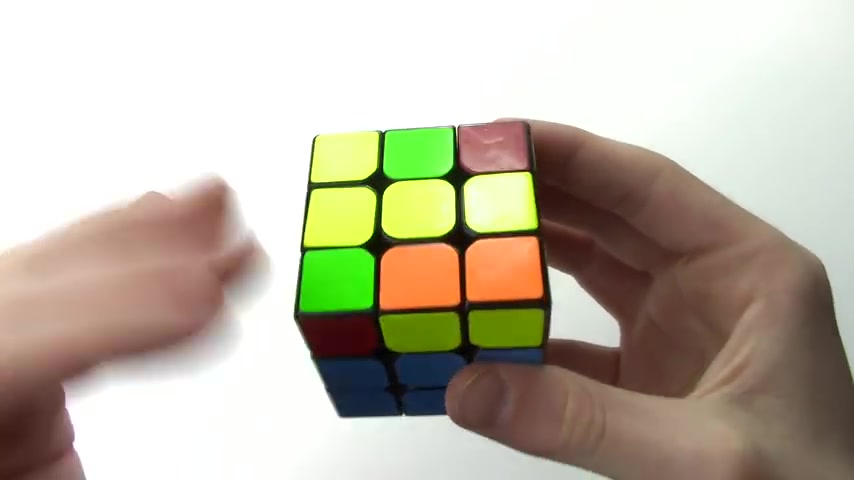
So uh if you have the bar , now , what you're gonna do is if you're going to have , if you have this , you want to turn this top side .
So it's facing horizontally and it's sideways because if I'm , I , I imagine it as like a sword or something .
If it's pointing at you , it could , it , it could stab you , right .
Obviously , if it's going the other way , it's not .
If it's a two sided sword , then it will hurt you .
So you want to make it so it's not gonna stab you and it's gonna uh go either left or right .
So you're safe either way .
Um But now that you have the bar , you're gonna wanna hold it horizontal like this and you're gonna do the exact same algorithm over again .
So you're gonna do F , which is the front side , clockwise , R , which is the right side , clockwise , U , which is the top side , clockwise , our prime , which is the right side , counter clockwise U prime , which is the upside counterclockwise .
And then F prime which is the front side counterclockwise .
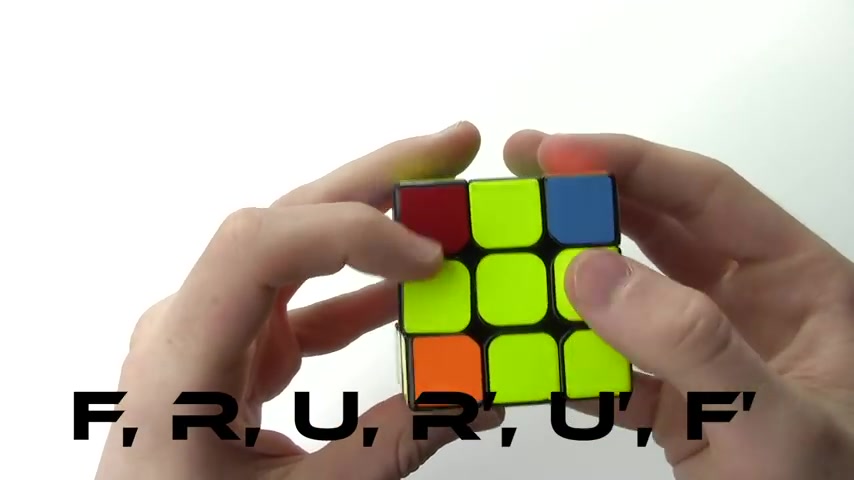
And now you can see that we have the Yellow Cross .
OK ?
So I'm gonna do it one more time .
This one's gonna be a little bit briefer .
So it's gonna be uh less uh in detail .
But um it's basically the exact same algorithm over and over again .
So if you start out with the dot It doesn't matter which way you hold it and this time I'll just hold it , I'll just hold it over here because it does not matter at all .
I'll just , yeah .
So you just hold it any side .
You want to , it really doesn't matter .
And as well if you have the dot It doesn't matter where it's placed because it's not gonna move .
And you just do this algorithm F R , you our prime , you prime and a prime .
And there we go .
Now you should have the L shape .
And again , if it's anywhere in the left , the top left , top right , you want to just turn this top face .
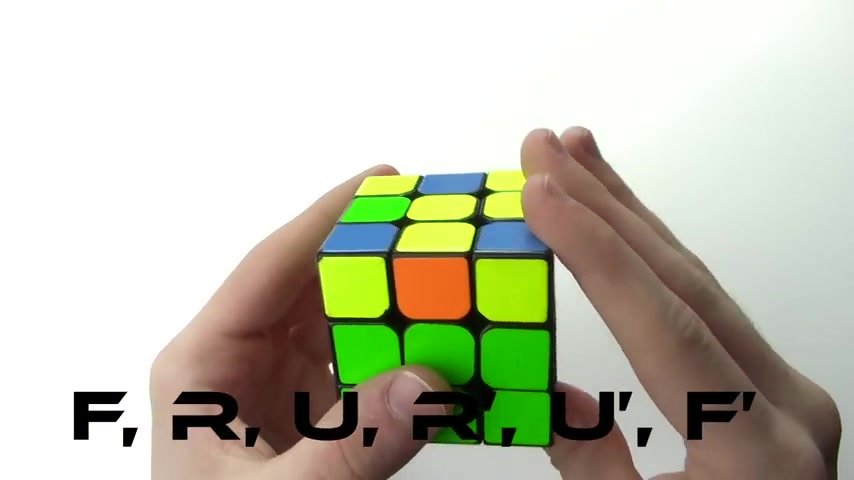
So it's in the bottom , right ?
And you're gonna do the exact same algorithm all over again .
So F R you our prime U prime F prime and that'll give you the bar .
And again , you don't want the bar to stab you .
So you're gonna turn this layer so it's horizontal to you and do that same algorithm all over again .
So F R you our prime U prime F prime and now we have the cross and this time we have two corners which is cool .
Um OK , so now that you have the cross , you're gonna have two different scenarios .
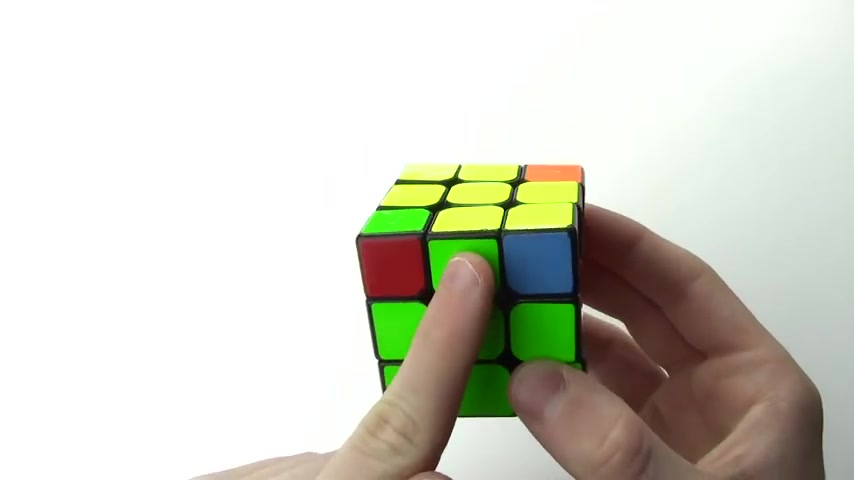
So if you look and turn the cube just a little bit so you can see along the edges , you're gonna want to look at the edge pieces here and see their colors .
So we have our green piece , orange piece , red piece and blue piece .
And as you can see , there are two pieces that are in the correct spot , which is the green on green and the orange on orange and then the red on blue doesn't work and the blue and red doesn't work .
And if it looks like this where there's like a piece matching here , oh there's blue , but then there's a red and orange , orange and green and then green and red and there's only one matching , just turn your cube , just turn this bit this top layer until you have more than one .
So see if we have the green and the orange and then , so you should have two at all times .
And then if it's like this , there's only , there's only one and then like this , there's uh none of them .
And then there's this one , there's none of them .
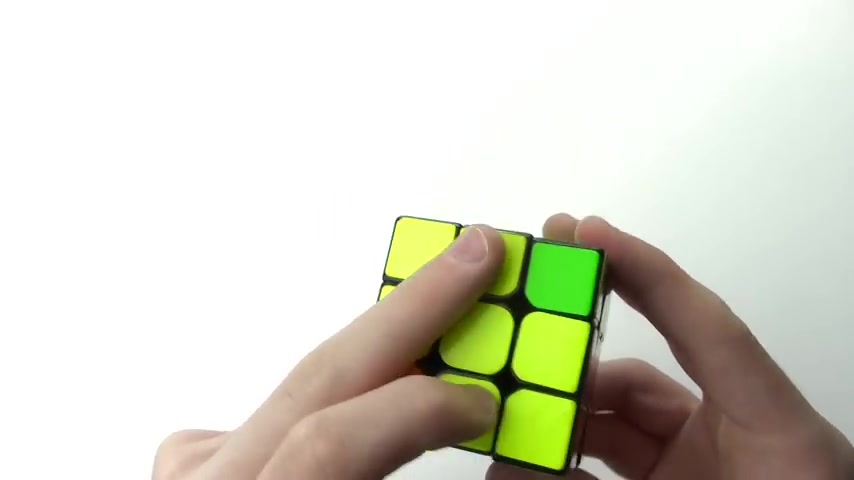
And then finally you have two and then also I'll show you the other way in a minute , which is where you have two that are matching on the opposite side .
So one here in here or here and here .
And I'll show you what to do in just a moment .
But in the meantime , I'm going to show you what happens if you have two basically right next to each other .
OK ?
So if you have two right next to each other .
So in this case , we have the orange that works and the green that works , you're gonna want to put the solved pieces on the left side and on the back side .
So the two pieces that are unsolved are in the front and on the right side and you're gonna hold it like this .
So again , it's on the left and in the back that are working and the two that aren't on the front and the right and you're gonna do this algorithm are like this top side twice .
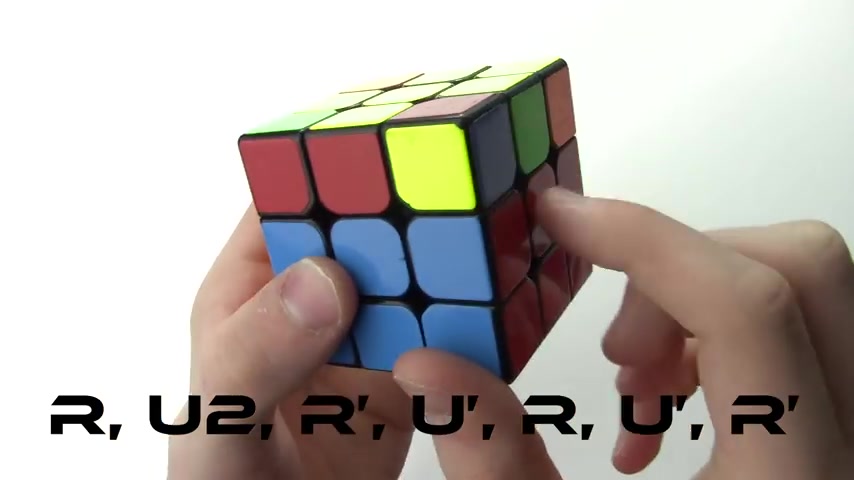
So 12 , you're gonna do the right side counterclockwise like that , you're gonna do the top side , counter clockwise and you're going to do the right side clockwise .
You knew the top side , counter clockwise and then the right side , counter clockwise .
And then obviously , it looks messed up .
But really what we did is we rotated those two pieces around .
So all we have to do is just line up one of these pieces with their center .
So the red should go to red .
So I'm going to turn this top side to red .
See now red's on red , blue is on blue , orange is on orange and green is on green .
So now our , our entire yellow cross is perfectly solved .
OK .
So now I've scrambled my Rubik's cube to where we've solved the Yellow Cross again , except for the side pieces aren't matching .
And in this case , I've rotated my cube as much as I can .
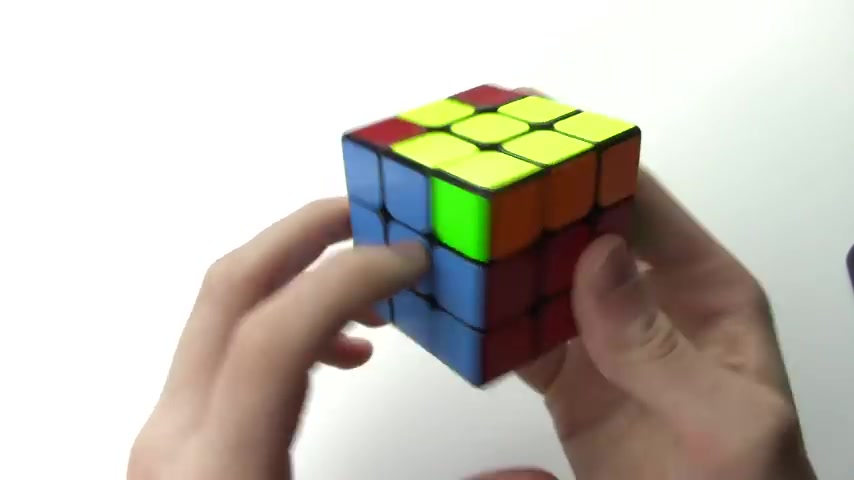
And the only pieces that seem to match is this piece and then the piece behind it .
So the red and orange are matching , but there's not pieces on the side .
And that same thing goes for if I solve the blue side , the blue is matching and the green is matching , but the orange and red are not matching .
So there's not pieces next to each other that are matching .
So we can't do that algorithm .
Um So what we're gonna do is we're gonna hold it .
So two pieces that are matching are on the side just like we did for the bar .
So the two pieces that are matching won't hurt us and they won't stab us , right ?
So we're gonna hold them on the side .
So we're gonna do this algorithm .
So R clockwise , the top side two times right side and counter clockwise , top side , counter clockwise , the right side , clockwise , top side , counterclockwise , and then the right side counterclockwise .
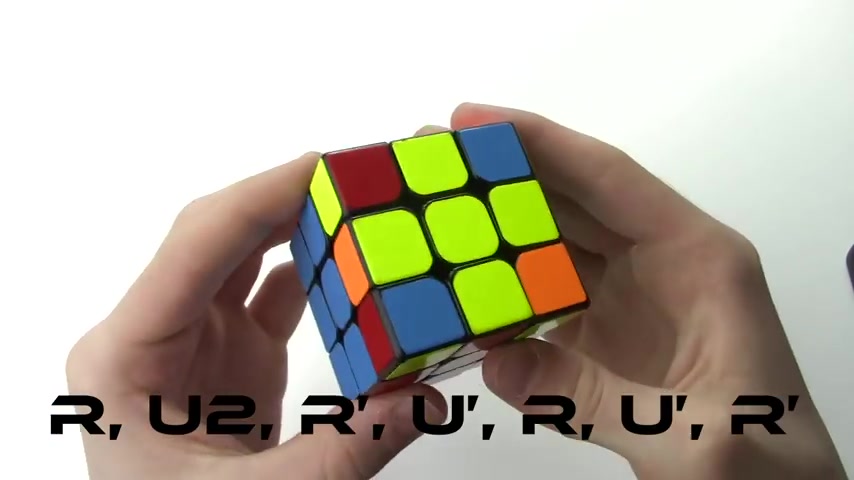
And then if we rotate the cube again , like see how it's not working , what you can do is try to line up your pieces .
And then after you do this algorithm and you just kind of look around .
You see if you rotate the cube , you'll find the two pieces that are adjacent to each other and they are now working and then you can do the same thing like I showed you before .
So if it's solved on the left and then solved in the back and then the two pieces that are not solved in the front and on the right , you're gonna do the same algorithm again , you're gonna do the R side clockwise , the top side two times , you're gonna do the right side , counter clockwise , the top side , counterclockwise , the right side clockwise , top side , counterclockwise and the right side counterclockwise .
And now all you do is you line up the red with the red or whatever color you want and then your entire yellow cross is solved .
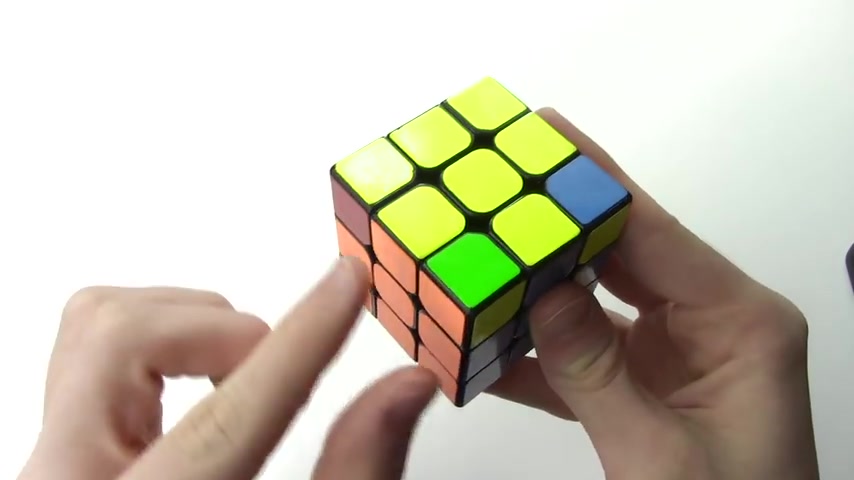
And now that's all that's left to do is to put the corners in the correct spots and then rotate them around to make them all face up .
And then your Rubik's cube should be solved .
OK .
So the second to last step in solving your Rubik's cube is , is almost one of the easiest parts that you can do and you're so , so close to solving it .
So this is like a really , really important part to pay attention to .
So basically , we're looking for a corner that is in its right position , but it doesn't have to be turned up to the yellow side .
For example , if this piece was turned to its side .
So there's a yellow on the side , obviously , it's not turned the right way .
But if it was the right colors , it's perfectly OK .
So for example , if this piece was orange , blue and yellow , it would have been OK .
But it's not because it's green and orange and yellow .
And then in this case , we have a blue , red and yellow .
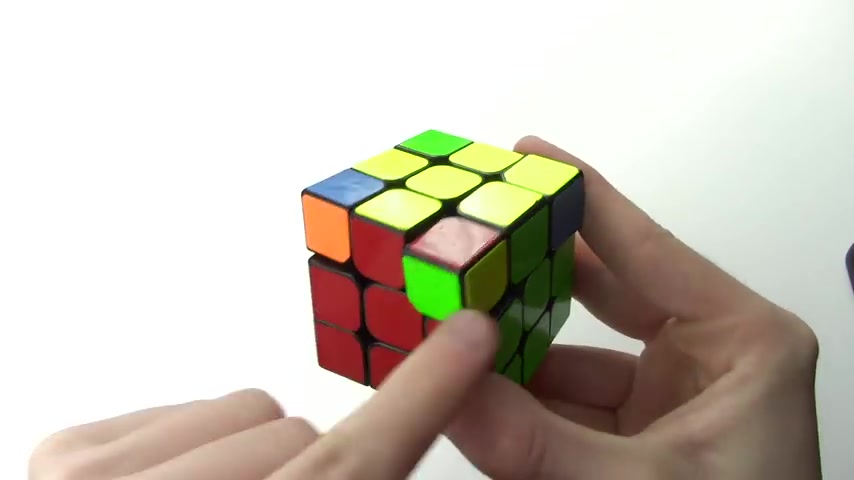
And tho those are obviously they're not like complete opposite colors .
We rotate this again .
This one is in its right position .
It doesn't matter if it was turned like this because it's green , red and yellow and that's the colors of this side .
But in this case , it's like this and you don't want to turn your corners because if you turn them and try to cheat , it will mess up the cube and it will be impossible to solve .
So that's really important in solving .
This is you wanna make sure that um this , you don't just turn them just to cheat and solve it uh because that will mess it up .
So just don't try not to do that .
But so we do have this piece and now we're gonna do an algorithm that uh rotates these three pieces around each other and doesn't affect your soft one in order to rotate them into the correct spot .
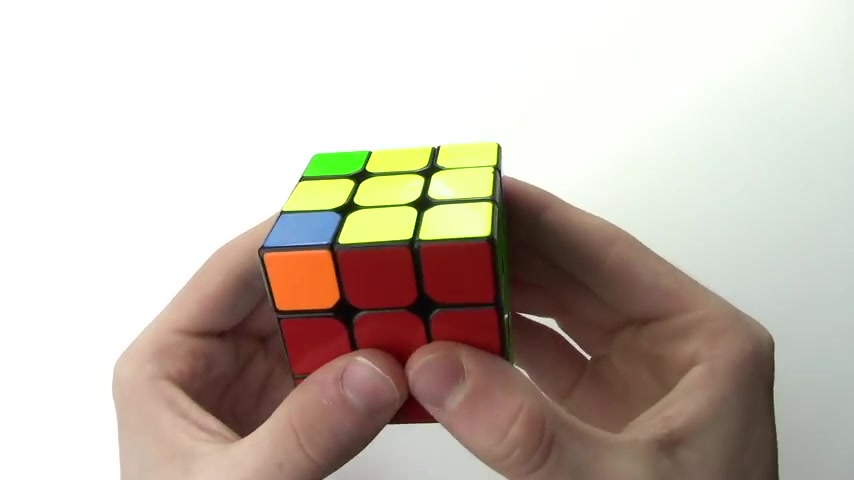
So hopefully , we can only , we can do it in like one move because this piece that's orange and blue , it needs to go back to the orange and blue , the orange and green needs to go here and the blue and red needs to go down here .
OK ?
So now what we're going to do is we're gonna hold the piece that's in its correct spot in the bottom .
Right , right here .
So now what we're going to do is gonna do this one algorithm which will rotate these three corners around and hopefully put them in the correct position .
So holding the piece that's in its right spot .
And again , it doesn't matter if it's rotated a certain direction , just make sure the piece that's in its right like area is in the bottom , right .
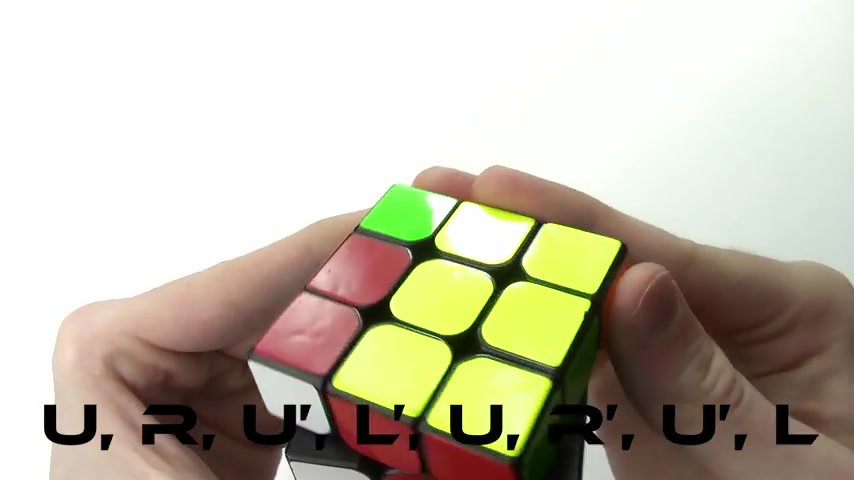
And you're gonna do this algorithm , you like this the right side clockwise , the top side counterclockwise , the left side counterclockwise , the top side clockwise , the right side , counterclockwise , the top side counterclockwise and then the left side clockwise .
And as you can see , it did not affect our piece here .
And now our pieces are not solved yet .
It looks like it goes counterclockwise because you can see this red and blue piece that was here is now over here and every piece is rotating like this .
So none of the pieces are in the correct spot yet .
So it looks like we're gonna have to do that piece this uh algorithm one more time which should rotate them in other correct spots .
So again , hold the piece that's correct in the bottom right and do this algorithm .
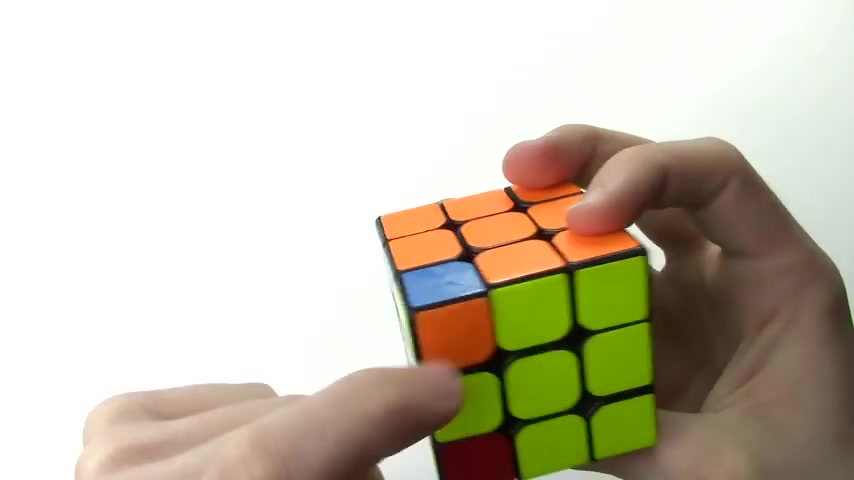
The top side clockwise , the right side clockwise , top side , counterclockwise , the left side counterclockwise , the top side clockwise , the right side at counterclockwise , the top side counterclockwise and the left side clockwise .
And now look , now you have a yellow , red and blue on the right side , we've got our orange and blue on the crack side and the green and orange are in the correct spot .
And then our uh piece that we started with is in the correct spot .
So now we're only one algorithm away from solving a Rubik's cube .
Now , if you want to just go ahead and turn your pieces , just go for it .
But if you want to actually solve it , then just wait , you're gonna do one simple algorithm that's only four moves long , gonna rotate each piece into here .
Now this , it may seem simple , but please pay attention to every detail that I turn it .
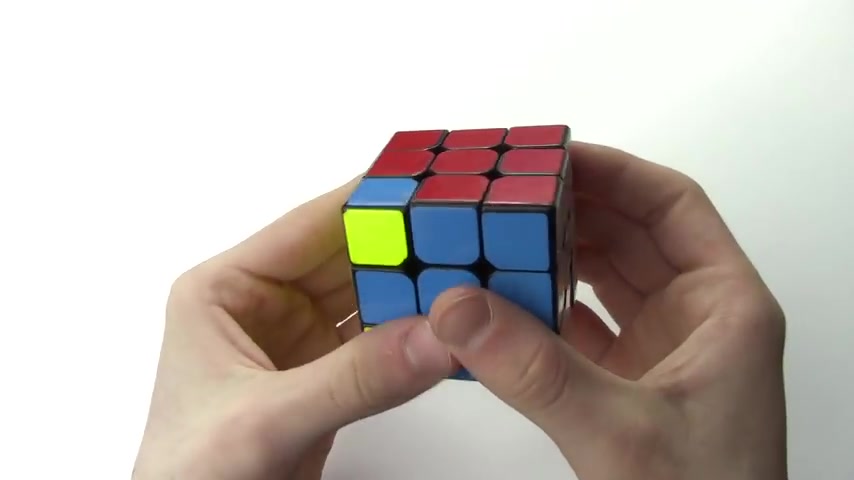
So maybe watch me do it first and then go back and watch it again because if you mess this up , it will definitely mess up the cube .
So just be very , very careful .
OK ?
So now I'm gonna show you this four move algorithm and I'm gonna show you exactly how to do it .
OK ?
So now what we're gonna do is you're gonna wanna turn the cube counterclockwise like this .
So the yellow is on the left and the white is on the right side and what you're gonna do is you're gonna put the piece that you're trying to rotate .
So the yellow is on the top in the top left here .
So if it were down here , just go ahead and rotate this piece up like that .
And you're gonna do this algorithm our prime , which is like this U prime R you and it didn't solve it .
So we're going to do it one more time .
OK .
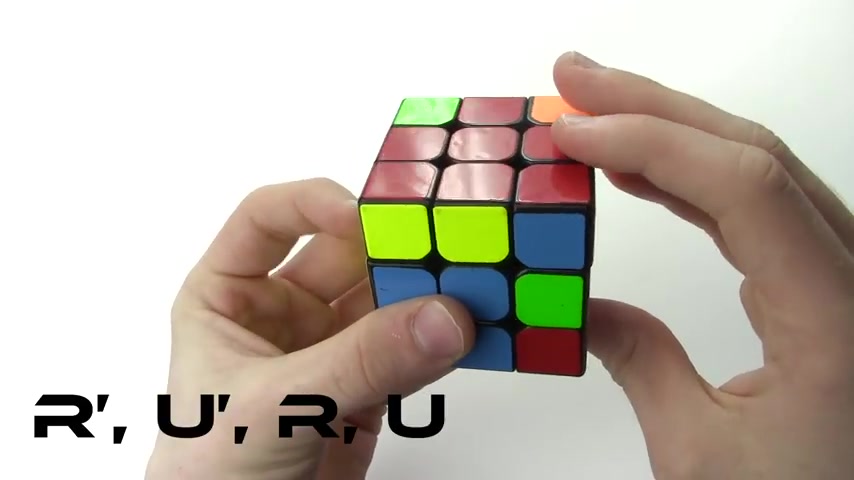
So our prime U prime R you and now don't move your cube , do not turn it at all or it will mess it up .
So now this piece is solved and you're one sol one little algorithm away from solving it .
So this is super important , do not move the cube and turn it around .
Just keep it where it is and do not do anything .
OK ?
So what you're gonna do is you're gonna take this left side and take this piece that you want and you're gonna turn it to the top left .
OK ?
So you're gonna go like this and turn this left side up or down or however you need it until this piece that you're trying to solve is in the top left .
OK ?
So you don't want to turn the cube and turn it down because that will mess you up .
You want to take this and turn it to the top left like that .
OK ?
And you're gonna do this algorithm one more time .
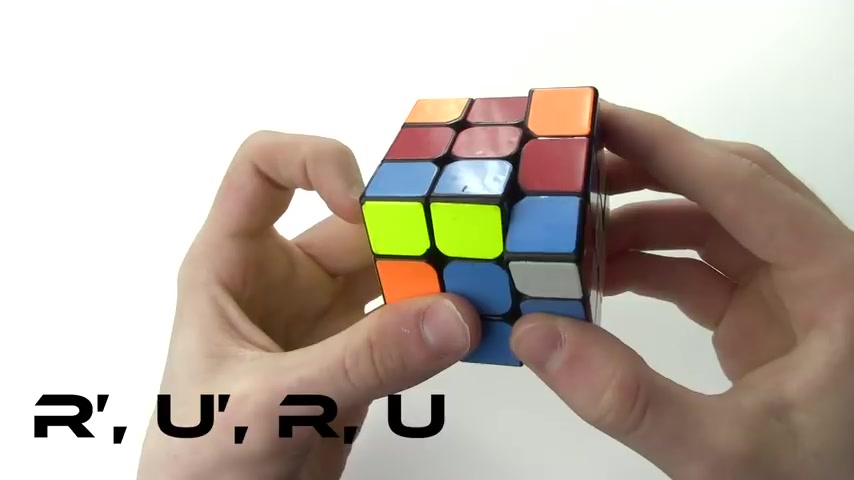
Our prime U prime R you , you're gonna do it again .
So our prime U prime are you and you do it again until it solves it .
So our prime U prime R you and it looks like we have to do it one more time and then it should be OK .
So our prime U prime R you and look at that .
So all of our second layer is perfectly OK ?
So now you're relieved and look at that , we're one turn away from solving the Rubik's cube and boom , your Rubik's cube is now solved .
Now , um if something messed up , you probably turned your cube or just did the algorithm wrong .
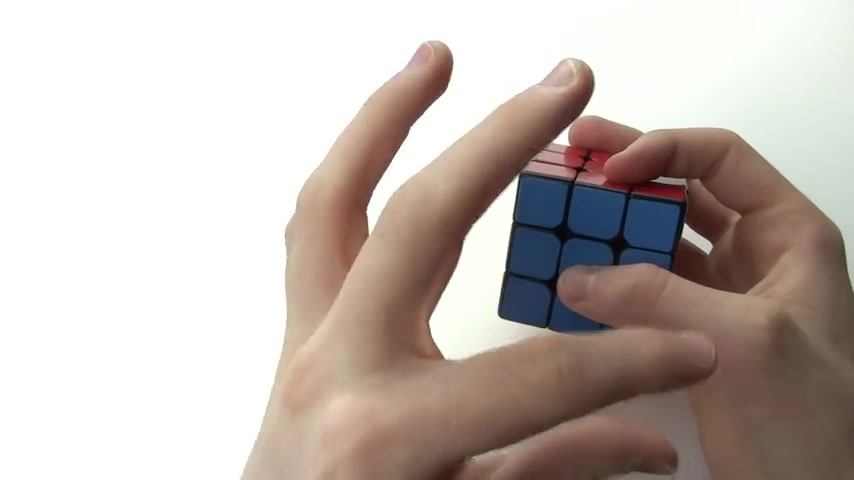
So make sure maybe go in the youtube settings down here and just click uh speed and turn the speed down to like 0.5 or 0.75 .
My voice will obviously sound different but uh it , it'll slow this down even more if you really , really want to see it super slow , but make sure you're doing this move like this exact rotation over and over and over again and then it'll put it back into the correct spot and don't turn your cue when you're doing that , just rotate this left side here .
So thank you guys so much for watching this video .
If you really enjoyed this , uh how to solve the three by three series , please let me know in the comments section down below again .
Uh Make sure you guys check out my Instagram uh link in the description because I might be starting a giveaway on another two by two in the .
Uh I might be giving away 22 by two actually in the uh or no , wait , that's not right .
I might be giving away 23 by three s two .
Really , really nice three by threes on my Instagram .
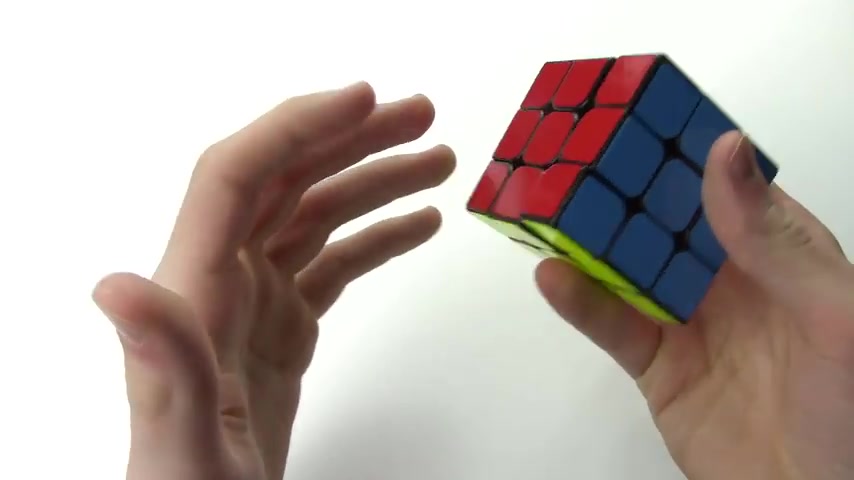
So go check that out as well as my new gaming channel Master Eat , which will have Fortnite and other more personal kind of videos and challenges and stuff .
If you want to uh take a look at that , please do so .
Uh But be sure to drop this , like drop a like on this video if this video gets like 100 likes , which is uh which is a big goal for me .
If it gets 100 likes , I'll do another video like this maybe on the first layer again or maybe the middle layer because that one is kind of tricky .
Um But let me know if you guys have any questions , I'll try to get back to you guys um in the comments .
If you have any questions , I'll try to write down algorithms in the comments or um do something that will help you guys if you're struggling .
But um I appreciate you guys watching my videos and getting my first video that I made of this over like 700,000 views , which is awesome .
Thank you guys so so much uh for all this crazy growth recently .
Um So thank you guys so much for watching my video .
If you guys have questions again , leave me in the comment down below .
Check out my Instagram for the giveaway , my Twitter and of course , subscribe .
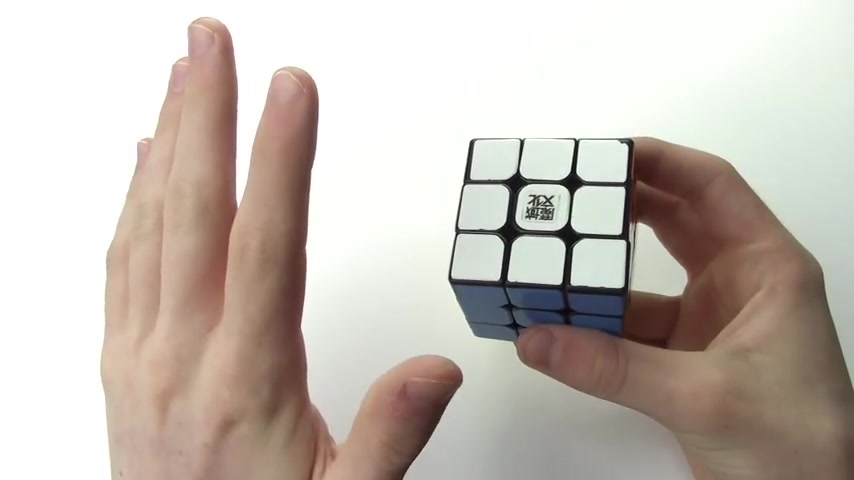
Thanks for watching guys .
Bye .
Are you looking for a way to reach a wider audience and get more views on your videos?
Our innovative video to text transcribing service can help you do just that.
We provide accurate transcriptions of your videos along with visual content that will help you attract new viewers and keep them engaged. Plus, our data analytics and ad campaign tools can help you monetize your content and maximize your revenue.
Let's partner up and take your video content to the next level!
Contact us today to learn more.